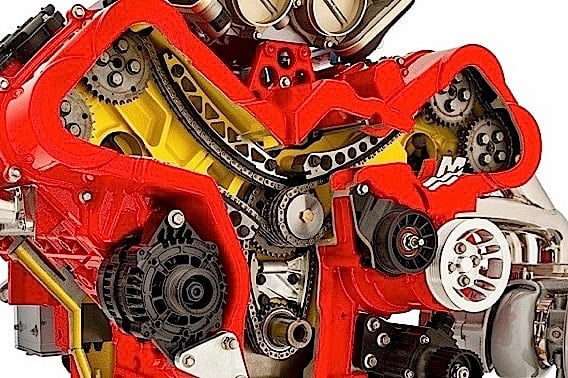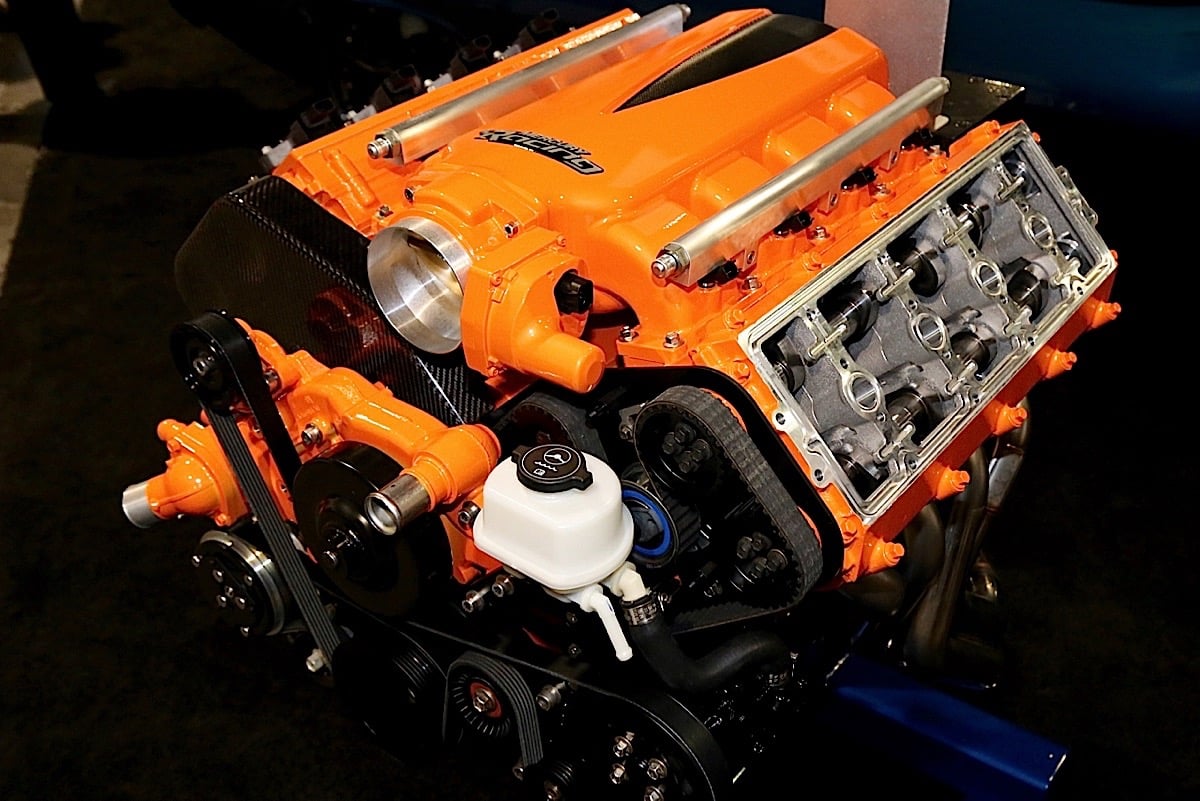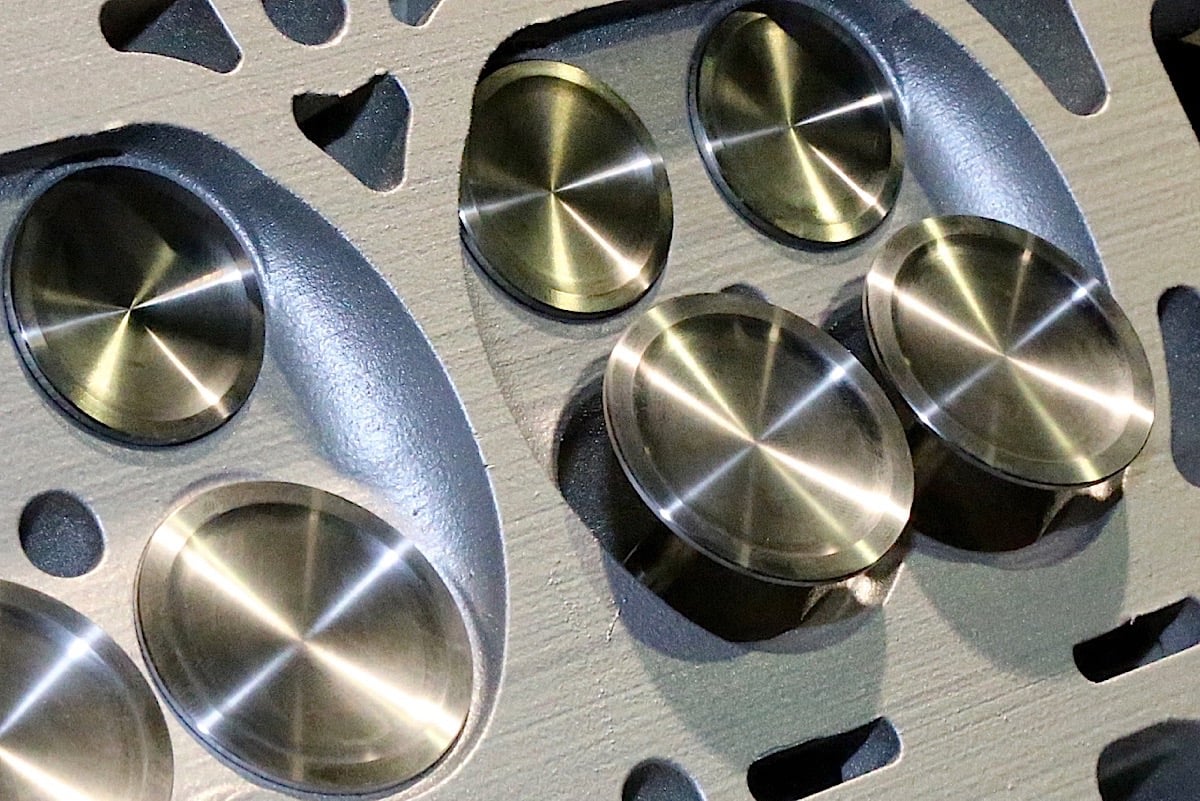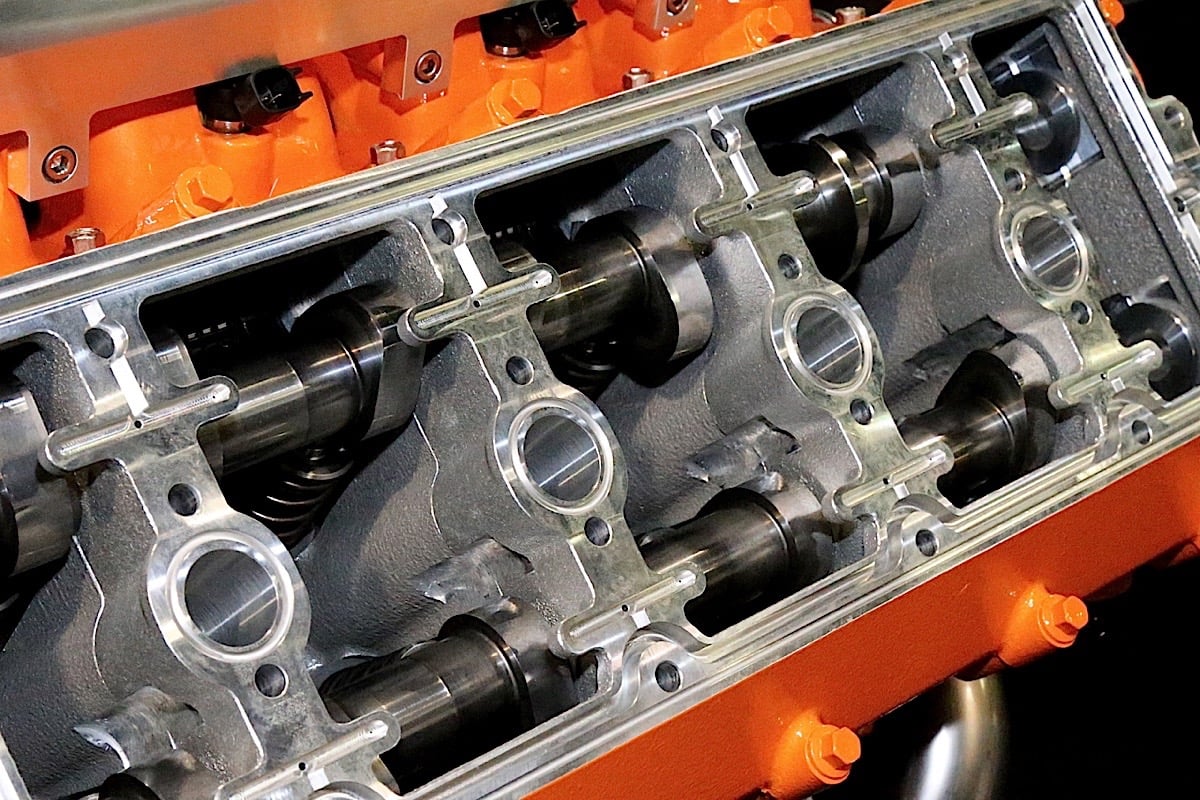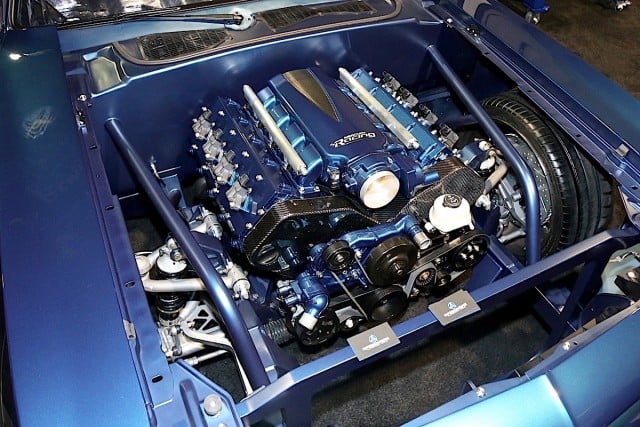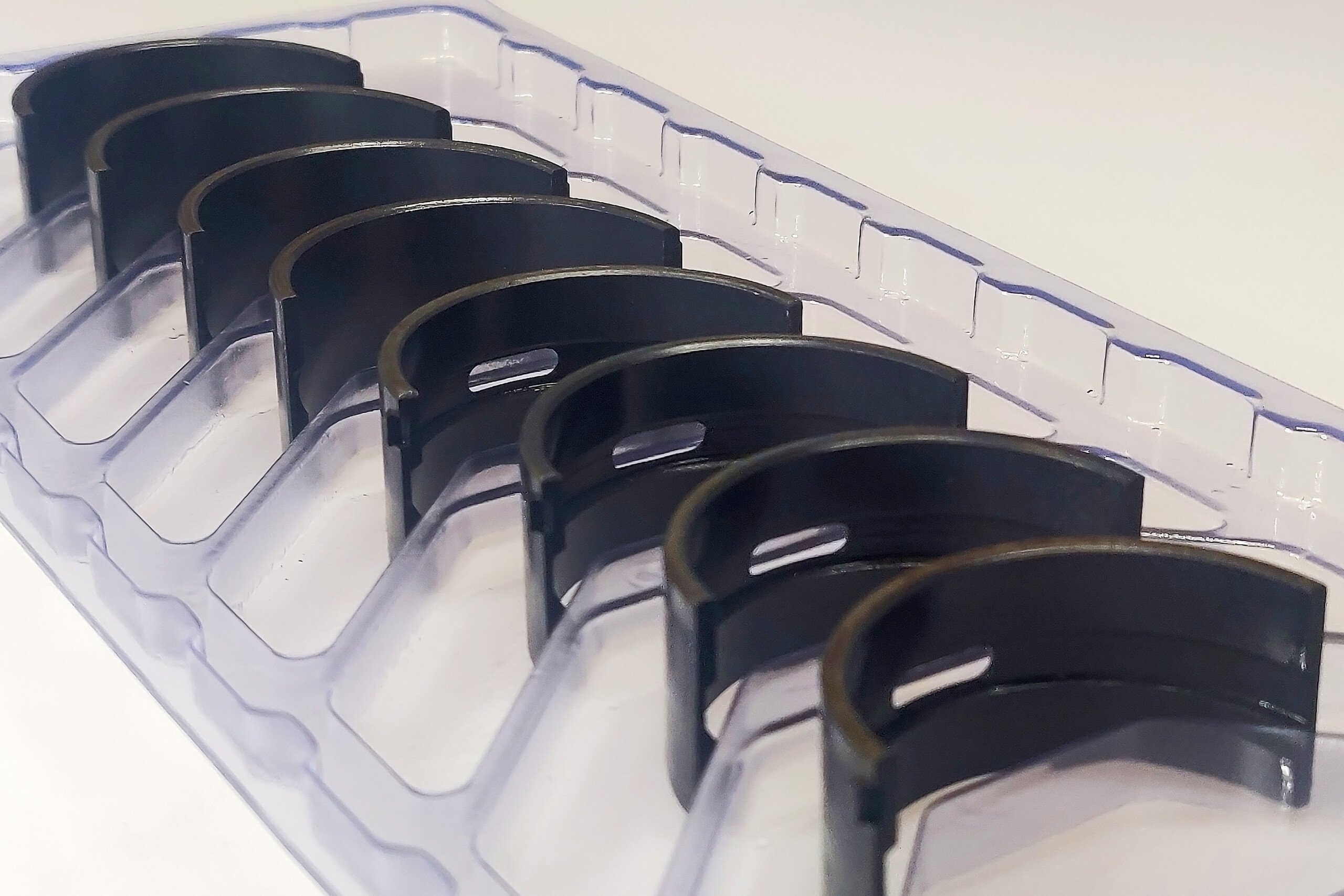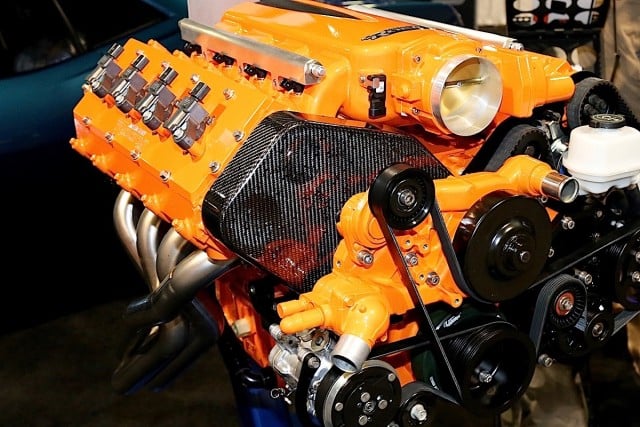 A unique 32-valve cylinder head for the LS engine developed by Mercury Racing is on track for final validation and could be released for sale by summer 2016.
A unique 32-valve cylinder head for the LS engine developed by Mercury Racing is on track for final validation and could be released for sale by summer 2016.
“The next step is getting it ready for production,” says the company’s general manger Erik Christiansen.
The cam drive is similar to the Mercury Racing QC4 engine, left. On the LS, the crank drives the cam gear as usual, although there's a full-length dummy camshaft to maintain proper oil pressure. There are two gears mounted to the cam gear that drive the overhead cams--one for each cylinder bank. The LS engine uses belts, instead of chains on the QC4.
Called the DOHC SB4, the head was shown for the first time at last year’s SEMA Show and generated enough interest for Mercury Marine to continue development. The valvetrain and timing belt designs are similar to the massive 9-liter, twin-turbo QC4 crate engine that Mercury introduced at the 2013 SEMA Show and was extensively covered in this EngineLabs article.
“We use a separate belt drive for each set of camshafts,” explains Christiansen, noting that the crankshaft drives a gear mounted to a dummy cam located in the stock cam journals. That gear then drives each set of belts. Unlike the old Ford 427 SOHC that used a stub cam in just the two forward cam journals to support the drive gear for the timing chain, the LS engine conversion needs a full-length dummy cam to maintain proper lubrication throughout the engine.
A closer look at the cylinder heads.
“Right now this engine is designed primarily for the street,” says Christiansen, pointing to a pilot engine mounted in a 1970 Barracuda built by Salvaggio Automotive Designs in Wisconsin.
Mercury says the DOHC, 4-valve design will offer enhanced airflow, higher engine rev limits while improving durability because there is less mass and reduced stress associated with milder cam timing requirements.
To help improve packaging, Mercury engineers “tipped in” the exhaust valve angle to help narrow the overall dimensions. The exhaust flange is shaped identically to a stock LS3 to support popular headers, although there are minor mounting angle and bolt-hole adjustments that will have to be made. Also, the accessory drives are tucked up as high as possible to avoid clearance problems with steering or body work when swapping the DOHC LS engine into popular applications. Intake valve diameter is 43.25 mm while the exhaust comes in at 35 mm. Other features such as the finger followers, cam placement and lubrication are similar to the QC4.



